When addressing PTSD, one must be aware that dissociation is a safety mechanism, a way of dealing with the overwhelming experience of a traumatic event or period in life.
Practitioners who ignore this survival mechanism and push for release are potentially making the symptomatic conditions of PTSD or Complex Trauma worse rather than better.
Reversing the Dissociation Processes in Order Heal PTSD and Complex Trauma
Dissociation shows as feeling disconnected from bodily sensations or the body in general. It often goes with excessive thinking and pressure in the head. Being disconnected from "feelings" and being in the head is perceived to be "safe". To reconnect with the body and its sensations is likely to be perceived as "unsafe".
Dissociation shows as feeling disconnected from bodily sensations or the body in general. It often goes with excessive thinking and pressure in the head.
These mechanisms involved in dissociation must be brought into awareness while working with a client during the unfolding of a therapeutic process. Only then can an attempt be made to explore the boundaries of "safe" and "unsafe" with the aim in mind of processing traumatic residue.
Telling the story of what happened while gradually increasing connection to body sensations will help process and release the high energy charge in the nervous system. It is by careful monitoring when one can venture into "unsafe" emotional territory while at the same time building increased capacity to contain and hold the space for the accompanying body sensations, that release and resolving PTSD can be successful.
Building up Resilience by Containing Traumatic Wounds
For the purpose of clarification, let's present an example: James recounts an incidence of torture in his early teens. As he tells his story, I notice there is no emotional presence in what he is recounting. I point this out to him. He is aware of this and we talk about dissociation, safety and being in the head rather than the body.
Once we have addressed these mechanisms, we start working with this by exploring the boundaries of "feeling" into the body and being "unsafe" and being in the head and disconnected. Through swinging back and forth, we increasingly build his capacity to stay with unpleasant body sensations. Once James gets back in touch and senses the helplessness and "freeze" response, we can start working to complete the biological fight and flight response by using his anger as a constructive, empowering force, helping him to reestablish healthy boundaries and containment.
How is dissociation in PTSD for you? Leave your comments below.

Dear Roland, thanks for being so clear on a subject which is often confusing. There is another way of looking at it – through the body rather than through the language of telling what happened. You can address the body directly with touch. I examine the state of the person’s autonomic nervous system. If I find that it is not in a state of activity of the ventral branch of the vagal nerve but rather in a state of stress or dorsal vagal, I teach my client to use a cranial exercise which establishes a ventral vagal state in less than a minute, and puts them into a state of social engagement. I then test again afterwards to see if I have gotten the desirable change in the nervous system. They can come back to the exercise on their own after the session. Post traumatic stress is often not a stress state, but a state of dorsal vagal activity with depressive activity.
Thanks for commenting on the article and sharing your expertise. Coming from a bodywork background (Cranial Sacral and Visceral Manipulation) I can relate to what you are saying. There are certainly multiple ways of looking at it and also varies ways for treating. With some a somatic approach directly works well and with others you might have to start with the cognitive part first – ultimately ‘seeking’ integration. My experience is that it is very case dependent and it is good to have different tools available.
Hi Stanley/ I would love to learn more about this technique and how to do it. Particularly, for my husband who I don’t believe can successfully access his childhood traumas w words. He persevered but I believe he suffers everyday from having emotions he can not access or understand.
I had 13 years meditation/breathwork practice now shown in studies to precipitate and exacerbate dissociation.
Since stopping any such practices I rarely experience what I call the acute symptoms; internal disorientation and feeling like bits of my body are separated from my body or missing. I do still experience hypoarousal symptoms, losing hours of time, inability to concentrate, fixed stare, amnesia which affects my ability to work and be present with people. Even part time work hours is a struggle.
I have a great therapist and finding inner child approach useful.
““Disassociation is bliss, being in the body is pain’” hit me square in the face. I’ve never had the words to describe how I exist. Only, I would swap ‘bliss’ with ‘safe’ and ‘pain’ with ‘excruciating’. I don’t know if I’ll ever feel safe in my own body.